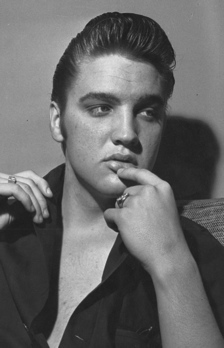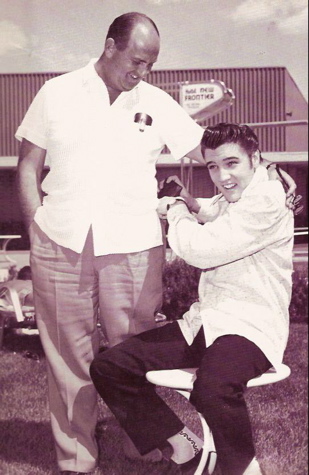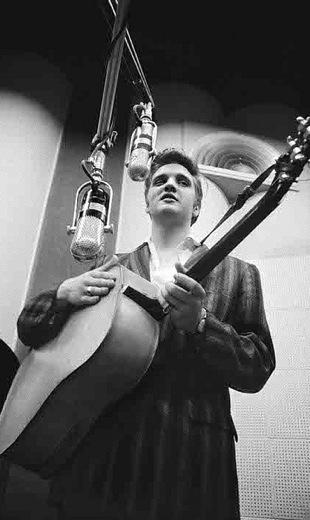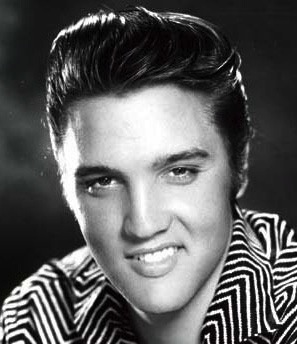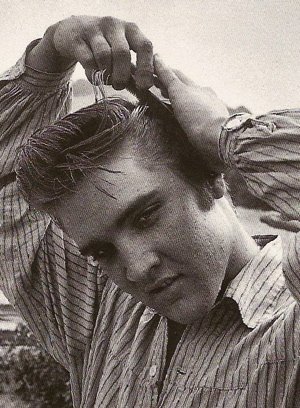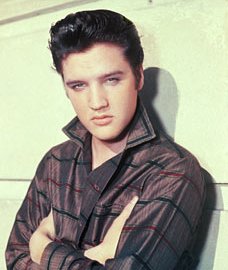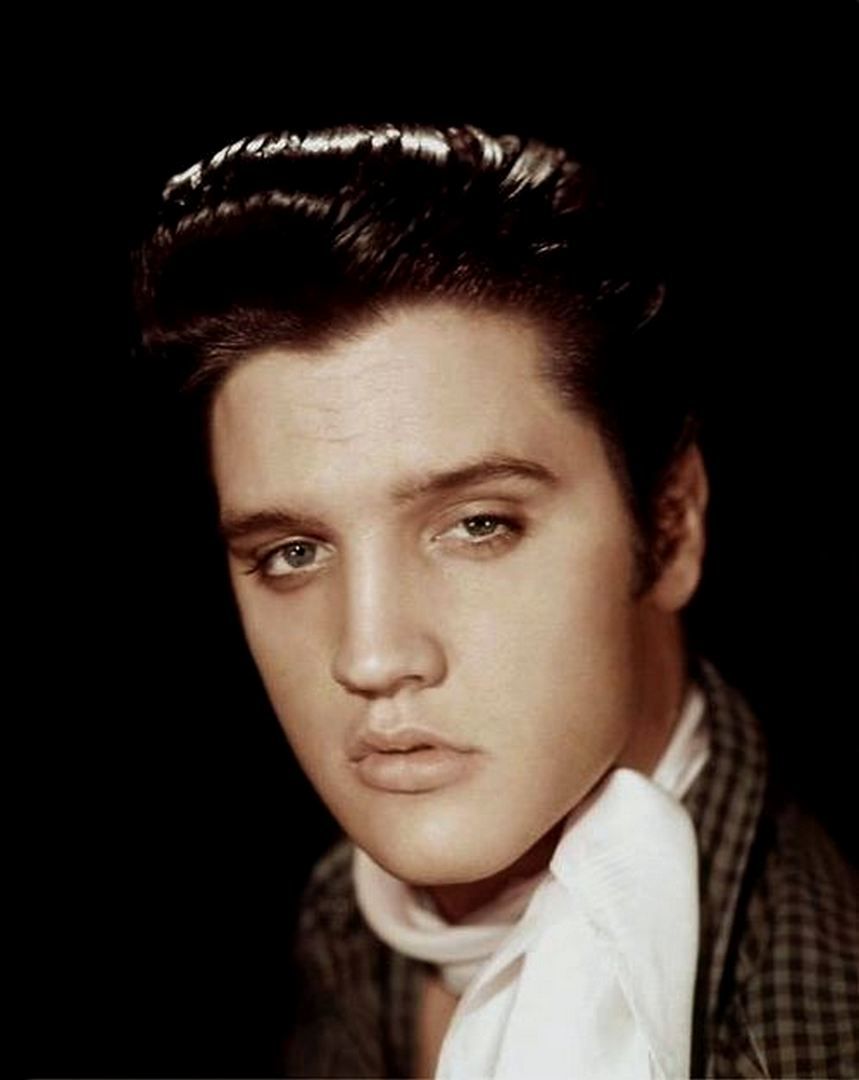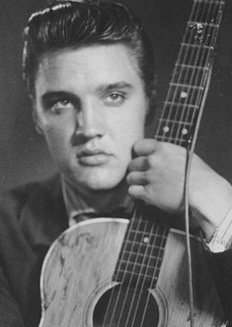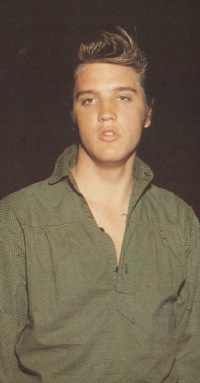Elvis History Blog
Memphis Belle Robbie Moore
Taught Elvis a Lesson in 1956
There was a period of time during his sudden rise to fame in 1956 that Elvis Presley actually walked the streets of American cities, interacting fairly normally with people he encountered there. But a series of unpleasant episodes soon put an end to that and caused Elvis to raise a barrier between himself and the public. Some of those events were widely reported and brought Presley unwanted negative publicity. There were the 1956 fistfights at a Memphis gas station in October and in a Toledo bar in November. Then in March 1957, he was accused of pulling a pistol on a marine in Memphis. Other, less-publicized incidents also helped convince Elvis of the need to shield himself from the public. Take, for instance, the case of Robbie Moore and her cheese sandwich.
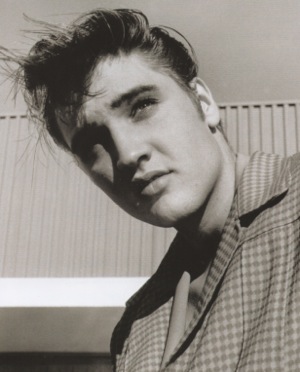
When Elvis Presley woke up in Memphis on Saturday morning, June 16, 1956, he was in the mood to seek publicity, not avoid it. That day was the mid-point of a 10-day break in his grueling tour schedule, and he meant to spend it wandering around his hometown, reconnecting with old friends. He was already a national sensation in the music business, but the criticism and controversy that would later follow him wherever he went was just beginning. So, on this Saturday in June, he fearlessly stepped out on the streets of Memphis.
Elvis’ first stop was the local live TV broadcast of “Dance Party," hosted by Memphis DJ Wink Martindale. During his walk-on appearance, Elvis talked informally about his upcoming July 4th Memphis charity show and other things. Later, with 8 or 10 friends and girlfriend Barbara Hearn in tow, Elvis wandered down Main Street and entered the Gridiron café near the Strand movie theater. By the time they got there, Robert Johnson, TV columnist for the Press-Scimtar, and photographer Robert Williams had joined the group.
While some of Elvis’ friends played the jukebox, and others hung around the café door, some inside, some out, Elvis and Barbara took seats at the counter. To Presley's right at the counter sat another young woman, whom Presley tried to engage in friendly conversation. She showed no interest in him.
“Elvis was just surprised when she didn’t respond more warmly, and he was just trying to get a smile out of her," Johnson recalled. As the woman continued to ignore Elvis' overtures, photographer Williams kept snapping pictures. The singer and his entourage soon left the café. “It was so casual that I had all but dismissed it from my mind,” Johnson later noted. He and Elvis were both to find out the peril that even such casual public encounters could pose for the young music megastar.
Since publications around the country were eager to run stories about Presley, even about such minor episodes as this one, Johnson decided to write up something and sell it for a few bucks. His article, along with Williams’s photos, soon appeared in the one-shot Elvis magazine “Elvis Presley Speaks,” published by RAVE, Inc., in New York.
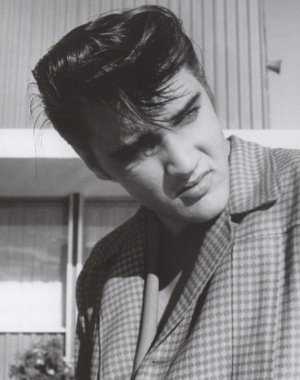
On August 27, 1956, over two months after the encounter with the young woman in the Gridiron, Elvis received notification in the mail from attorney Marvin Brooks Norfleet that he was prepared to file a $42,500 damage suit against Presley on behalf of his client, Miss Robbie Moore. The suit charged Presley with invading her privacy and committing assault and battery when he laid his head on her shoulder in a Memphis café on June 16, 1956.
In notifying Elvis of his intention to file the suit, Norfleet was obviously fishing for a settlement. He got it. Soon he was contacted by a “firm of New York lawyers representing Presley” (aka Colonel Parker). The firm agreed to pay $5,500 to keep the case from going to court. Attorney Norfleet and plaintiff Robbie Moore split the pot, each taking $2,750.
When the case went public in late September 1956, Elvis confirmed the settlement, saying it was done to “keep down undesirable publicity.” Naively, Presley told a Press-Scimitar reporter that he was surprised by the lawsuit. He said he had known Miss Moore for several years and had “no idea she would object to the picture.” The reporter also made his way to Robbie Moore’s home at 431 Stonewall to get her side of the story.
When the Press-Scimitar story ran on September 29, 1956, eyewitness accounts of the episode back in June different widely. The 20-year-old Moore provided the following narrative of Presley’s actions:
“She and a friend had ordered cheese sandwiches, and when hers came Presley ate it all and drank all her milk. He also went through her purse and then laid his head on her shoulder, all of these poses being photographed … To worsen matters, when Presley left he made no offer to pay for her sandwich and milk. She had to pay for it itself.”
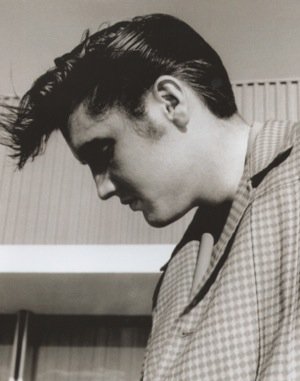
She also stated that Presley was “a total stranger to her,” denying his contention that he had known her for “several years.” Elvis declined to give his account of the episode, but columnist Robert Johnson, who was in the Gridiron that day, had a decidedly different interpretation of Presley’s actions from that provided by Robbie Moore:
“Elvis spoke to her pleasantly as he entered and said something like, ‘How are you? I haven’t seen you in a long time.’ The girl didn’t say anything. Elvis seemed to be trying to be friendly. He was just teasing and having fun. He opened her purse, looking at her teasingly out of the corner of his eye, but snapped it back shut and put it on the counter. He took a nibble of her sandwich and a sip of her milk. That was all. She still did not respond and Elvis laid his head on her shoulder as if to say, ‘Come on, let’s be friends.’ He was just acting in a boyish kind of way.”
The newspaper reporter interviewed Robbie Moore at her home the day after the suit settlement became public. Their conversation was interrupted several times by heckling phone calls she received from teenage girls. Moore allowed the reporter to listen in on a couple of the calls. “How can you take money from someone as great as Elvis?” a caller asked. Moore responded, “I don’t think he’s so great.” She told the reporter she had received dozens of such calls that day, but she seemed more amused than troubled by the outraged callers.
Robert Johnson, who had been granted exceptional access to Elvis, noted that the singer never let the café incident bother him. “Elvis has never mentioned to me or the photographer that this incident has caused him trouble,” Johnson said. “He has never said a word about it. He just accepted it.”
That doesn’t mean that Elvis forgot the encounter with Robbie Moore. It and other public disputes in Memphis in 1956 and 1957 would teach him the hazards of openly walking the streets of the city and interacting with strangers. To protect himself personally and professionally, he retreated behind the rock walls of Graceland and virtual ones manned by a phalanx of loyal retainers who kept his fans and potential enemies alike at a distance. Those walls would remain in place for the rest of his life. — Alan Hanson | © May 2015
Reader Comment: Your information on Robbie Moore is incomplete. She was harassed by phone calls not only at home, but also on her job. She ended up quitting her job. Also, she had every opportunity to tell Elvis to leave her alone, but she didn't. — Joyce (November 2015)
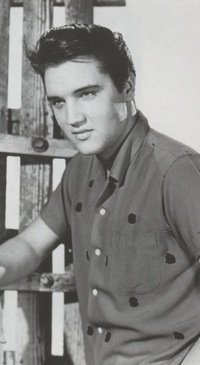
“Elvis spoke to her pleasantly as he entered and said something like, ‘How are you? I haven’t seen you in a long time.’ The girl didn’t say anything. Elvis seemed to be trying to be friendly. He was just teasing and having fun.”
